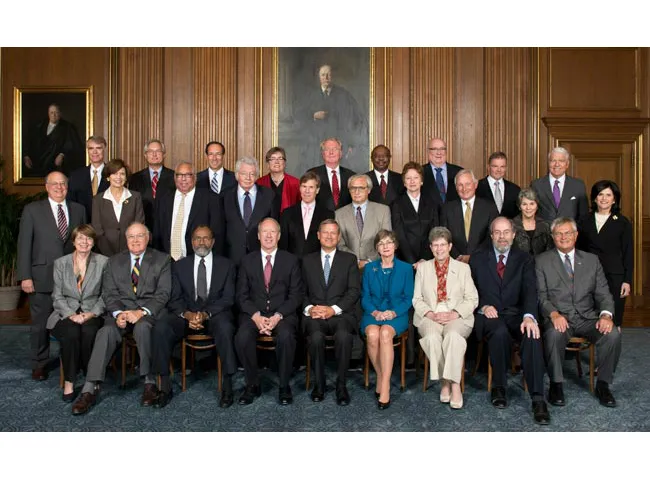
Judicial Conference of the United States
Contact: David Sellers, 202-502-2600
The Judicial Conference of the United States today agreed to close six non-resident federal court facilities—the latest in a series of cost-cutting measures implemented by the federal Judiciary's national policy-making body.
Cost containment, a Judiciary-wide initiative dating back to 2004, has resulted in a close examination of nearly every Judiciary function and activity to determine if it is necessary, and if so, how it can be done more efficiently and at less cost. This effort is on-going.
Nevertheless, the "biggest threat to our fiscal health in the short term is budget sequestration," Judge Julia Gibbons, Chair of the Judicial Conference Budget Committee, told the Conference today.
"We estimate sequestration would cut the Judiciary's budget by more than $500 million below the 2012 funding level," Gibbons said. "Quite simply, a reduction of this magnitude would cripple the operations of the federal Judiciary and our constitutional mission would be compromised due to these sudden, arbitrary budget cuts."
(The Deficit Reduction Act requires automatic across the board spending cuts, known as sequestration, in January 2013, unless Congress adopts a deficit reduction plan.)
With regard to the court facilities to be closed, each contains a courtroom, but has no full-time resident federal judge. (The Conference's action affects court space only in each facility.) In determining whether a facility should be closed, consideration was given to the usage of the court space, location, condition, and operating costs. Release of the court space in the following facilities will save the Judiciary a total of about $1 million a year in rent costs:
- Wilkesboro, North Carolina, (upon completion of the renovation of the courthouse in Statesville, North Carolina);
- Beaufort, South Carolina, (at the end of the lease term in 2014);
- Meridian, Mississippi;
- Amarillo, Texas, (upon the cancellation of the lease for the bankruptcy court space);
- Pikeville, Kentucky, (releasing the bankruptcy courtroom and chamber in leased space); and
- Gadsden, Alabama.
In other action, the Conference:
- Asked each district court unit (district clerk's office, probation office, pretrial services office, and bankruptcy court) to work together to adopt a shared administrative services plan in an effort to achieve cost savings while preserving effective court operations and services.
- Eliminated funding to print and mail court of appeals slip opinions -- court opinions issued prior to formal publication in case reporters. This will achieve an annual savings of more than $1 million in printing and mailing costs. Courts may instead provide electronic copies of slip opinions.
- Approved the national implementation of a program to provide access to court opinions through the Government Printing Office's Federal Digital System (FDsys). Nearly thirty federal courts currently participate in the pilot. The system provides free on-line access to official publications from all three branches of government and allows users to search, browse, and download content.
The 26-member Judicial Conference is the policy-making body for the federal court system. The Chief Justice serves as its presiding officer. Its members are the chief judges of the 13 courts of appeals, a district judge from each of the 12 geographic circuits, and the chief judge of the Court of International Trade. The Conference meets twice a year to consider administrative and policy issues affecting the court system, and to make recommendations to Congress concerning legislation involving the Judicial Branch.
Subscribe to News Updates
Subscribe to be notified when the news section is updated.
